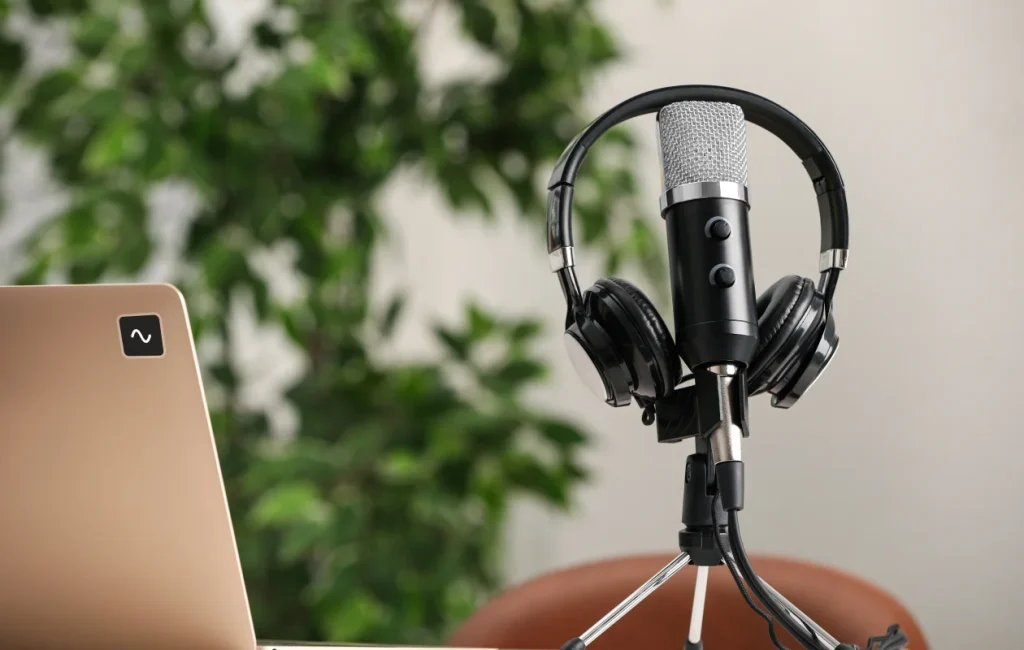Think podcasting is just for celebrities or techies with home studios? Think again. With the rise of low-cost, browser-based tools, creating a professional-sounding podcast is more accessible than ever. Whether you’re building a brand, interviewing experts, or just sharing stories with the world, the right online platforms can streamline everything from recording and editing to publishing and promotion — no studio required.
Here are some of the best online tools to help you start, grow, and polish your podcast — including one unexpected tip on photo backgrounds you shouldn’t skip.
1. Riverside.fm: Broadcast-Quality Audio and Video, From Anywhere
Riverside.fm is built specifically for podcasters who want studio-grade recordings — even when recording remotely. It captures audio and video locally on each speaker’s device, which means no quality is lost to bad Wi-Fi. It also separates each speaker into its own track, making post-production easier. Unlike Zoom, which compresses audio, Riverside preserves it in crystal-clear 48kHz. The platform also includes automatic transcriptions and a Magic Editor for quick cuts. If you’re planning remote interviews or panel discussions, this tool makes your life a whole lot easier.
2. Descript: Podcast Editing Meets Word Processing
Descript changes the game by letting you edit audio like a text document. You upload your audio, and Descript transcribes it. From there, you can delete or move around sections of audio simply by editing the words on screen. Want to remove filler words like “um” or “you know”? Descript’s “Remove Filler Words” tool does it instantly. It also includes studio-quality AI voice cloning, screen recording, and even video editing. It’s an all-in-one editing suite — especially handy if you’re not a traditional audio engineer.
3. Buzzsprout: Distribution Without the Headaches
Buzzsprout is one of the easiest platforms for getting your podcast listed everywhere that matters — Spotify, Apple Podcasts, Amazon Music, and more. You simply upload your episodes and it handles the rest. Buzzsprout also gives you a free podcast website, listener analytics, and dynamic content insertion (great for adding ads or promos to past episodes). Their user interface is beginner-friendly, and they have an active support community. Bonus: the platform offers a handy affiliate marketplace if you’re looking to monetize your show early.
4. Podpage: Build a Website That Loves Your Podcast
Having a podcast is great — but having a home for your podcast is even better. Podpage automatically creates a custom, SEO-friendly website from your podcast feed. It updates each time you publish a new episode and includes features like guest profiles, email capture, reviews, and custom domains. It’s perfect for creators who want to build their brand without learning WordPress. Even better? It syncs with your RSS feed, so your site stays up to date without extra effort.
5. Auphonic: Automatic Audio Enhancement
Even the best podcasts can suffer from audio inconsistencies — like when your guest is too quiet or the background noise is too loud. Auphonic is a post-production tool that uses AI to balance levels, reduce noise, and normalize loudness. It’s particularly helpful for podcasters using budget mics or recording in less-than-ideal environments. Upload your file, and Auphonic cleans it up while preserving voice quality. There’s a generous free tier, and it’s often used alongside platforms like Descript or GarageBand.
6. Headliner: Turn Your Podcast into Social-Ready Video
Want to grow your podcast audience? You’ll need to show up on social. Headliner makes it easy to turn audio clips into engaging audiograms — short, animated videos you can post to Instagram, Twitter, LinkedIn, or TikTok. You can add waveform animations, captions, images, and branded templates. It’s also great for teaser clips or highlighting key quotes from your episodes. With a free plan and browser-based editor, Headliner helps you turn passive listening into active engagement.
📸 FAQ: Can Photo Background Editing Help Podcasters? Absolutely.
A growing number of podcasters are building visual identities alongside their audio content — especially for social posts, thumbnails, and guest promos. Whether you’re taking headshots for a cover graphic or creating Instagram teasers, clean visuals matter. Here are some common questions about photo background editing for podcasters:
Q1: Why should I care about editing my photo backgrounds as a podcaster?
Clean, distraction-free backgrounds make your promotional graphics look more professional. Whether you’re posting guest photos, episode thumbnails, or personal branding shots, editing your background can help the subject stand out and maintain visual consistency across platforms.
Q2: What’s an easy tool to remove or change a background without Photoshop?
Try Adobe Express’s background creator. It’s free, browser-based, and lets you quickly remove or replace backgrounds with solid colors, gradients, or custom images. Great for branding photos or promo cards — no design experience needed.
Q3: Can I create podcast-themed social images using background editing tools?
Yes! Combine a well-edited headshot with a background that matches your podcast’s color scheme or vibe. Tools like Remove.bg and Fotor also allow layering your headshot over studio, abstract, or branded backdrops, perfect for social posts and guest announcements.
Q4: What kind of photo backgrounds work best for podcast thumbnails?
Solid, muted backgrounds with good contrast usually work best. They ensure text overlays (like episode titles or guest names) are readable. Keep it simple — avoid busy patterns that distract from faces or text.
Q5: How often should I refresh my podcast visuals?
Aim to refresh headshots or cover art at least once a year — especially if your style, audience, or format evolves. Regular visual updates signal that your show is active, intentional, and visually aligned with your message.
Creating a podcast is no longer reserved for audio engineers or influencers with deep pockets. These digital tools bring high production value, creative control, and growth-ready workflows to anyone with a story to tell. And when you pair a great voice with sharp visuals? You don’t just sound legit — you look the part too.
